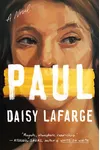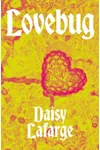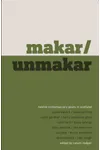Picture a Scottish storyteller who weaves poetry, fiction, and science into a mesmerizing tapestry—meet Daisy Lafarge! This Glasgow-based writer and artist has captured readers with her lyrical explorations of intimacy, ecology, and the unseen worlds of microbes and human connection. From her award-winning novel Paul to her poetry collection Life Without Air, Lafarge’s work invites us to rethink our place in a fragile, interconnected world.
With a knack for blending the microscopic and the cosmic, Lafarge has carved a unique niche in contemporary literature. Her work doesn’t just entertain—it challenges us to see the beauty and toxicity in our relationships with nature and each other. Ready to dive into her story?
The Making of Daisy Lafarge
Born in Hastings, England, in 1992, Daisy Lafarge moved to Scotland in 2011, where she’s since made her home. She studied Fine Art and History of Art at Edinburgh College of Art before earning a PhD in Creative Writing, Geography, and Molecular Epidemiology at the University of Glasgow in 2021. This eclectic academic path shaped her interdisciplinary approach, blending art, science, and literature. Early on, Lafarge wrote poetry and criticism, editing for MAP magazine and honing her voice as a poet and thinker. Her travels, including research trips to Tanzania for her PhD on zoonotic diseases, deepened her fascination with the boundaries between humans, animals, and microbes.
Daisy Lafarge’s Unforgettable Works
Lafarge’s debut poetry collection, Life Without Air (Granta, 2020), is a haunting exploration of airlessness—both literal and metaphorical. Inspired by Louis Pasteur’s term for fermentation, the poems delve into toxic environments, from polluted atmospheres to emotional suffocation. Shortlisted for the T.S. Eliot Prize and named Scottish Poetry Book of the Year, it’s a fierce yet lyrical meditation on fragility and survival. Critics praise its “clear-eyed poetry” that mourns ecological and human loss while celebrating resilience.
Her debut novel, Paul (Granta, 2021), is a gripping tale of a young woman entangled with a manipulative older man in rural France. Winner of a Betty Trask Award and a New York Times Editor’s Choice, it blends psychological depth with sharp social commentary. Lafarge’s prose, described as “highly readable” by The Guardian, captures the disorientation of youth and the perils of passivity. Her 2023 book, Lovebug (Peninsula Press), explores the poetics of infection, drawing on her PhD research to muse on intimacy and microbial entanglements. Her early poetry pamphlet, understudies for air (Sad Press, 2017), also showcased her experimental style, earning her an Eric Gregory Award.
Lafarge’s writing is marked by a lyrical yet incisive tone, weaving scientific precision with poetic fluidity. Her themes—ecology, intimacy, and the Anthropocene—resonate with readers who crave literature that mirrors our complex world. Whether she’s writing about a shriveled Victorian lung or a parasitic relationship, Lafarge’s work is both intimate and universal.
Why Daisy Lafarge Matters
Daisy Lafarge is more than a writer—she’s a bridge between art, science, and storytelling. Her work challenges readers to confront the toxicities we inherit and the connections we overlook. By blending poetry, fiction, and essays, she’s redefining what literature can do in the age of climate crisis and global health challenges. Her collaborations with visual artists and contributions to publications like The New York Times and Frieze amplify her voice, making her a vital figure in contemporary culture. Lafarge’s ability to find beauty in the microscopic—whether a virus or a fleeting emotion—offers hope and clarity in turbulent times.
- Born: 1992 in Hastings, England
- Key Works: Life Without Air, Paul, Lovebug
- Awards: Betty Trask Award, Eric Gregory Award, Scottish Poetry Book of the Year
- Fun Fact: Her PhD explored zoonotic diseases, inspiring her unique take on infection and intimacy.
About Daisy Lafarge
Snag Life Without Air or Paul and dive into Daisy Lafarge’s lyrical, thought-provoking world!



